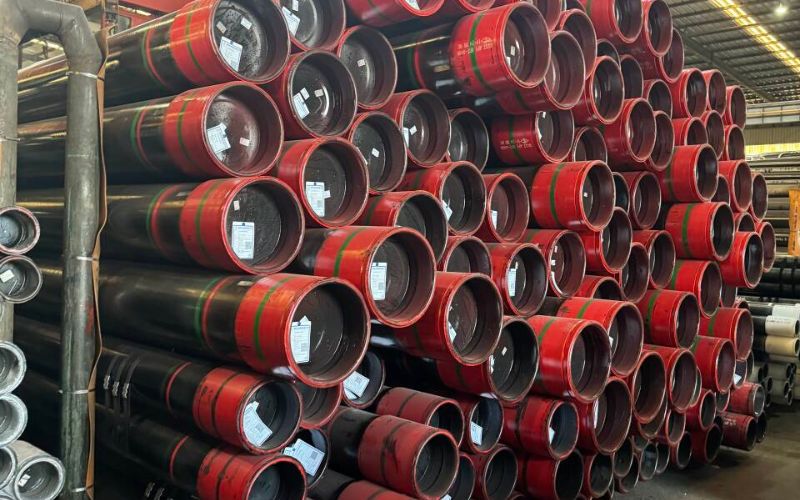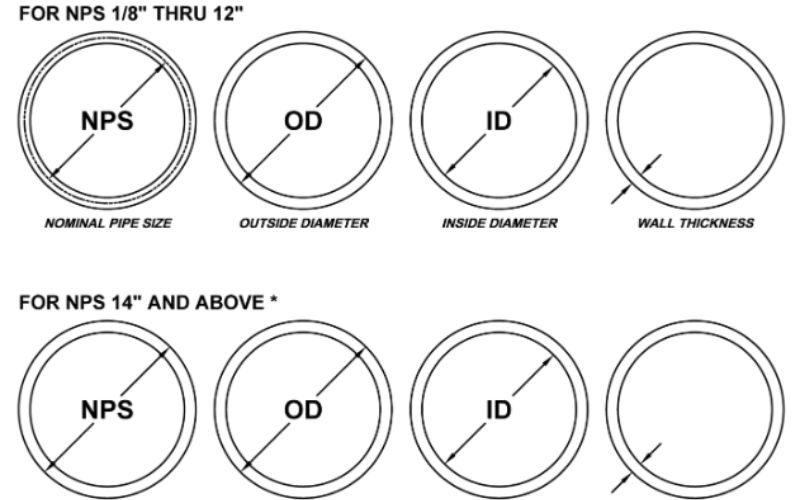Stainless steel water pipes have earned the title of “fundamental” in contemporary construction, boasting exceptional durability, corrosion resistance, and an elegant form. Among the various types of stainless steel tubing, seamless ones are considered the best option, as they are suitable for applications requiring high performance in diverse environments.
In this complete guide, you will find information about the advantages of seamless stainless steel water pipes and a variety of their industrial applications. Any construction, engineering, and plumbing professionals would be familiar with the numerous benefits of seamless tubing, which should enable them to make better choices on projects where reliability and efficiency are crucial.
Introduction to Stainless Steel Water Pipes

Water pipes made of stainless steel are durable, corrosion-resistant, and suitable for transporting fluids in various applications. These pipes are made from a high-grade steel alloy, which provides them with exceptional strength and a longer lifespan.
They provide satisfaction to clients across multiple industries, including construction and plumbing, where speed and reliability are emphasized. It also happens to be an eco-friendly compromise since stainless steel is 100% recyclable, which minimizes the chances of contamination being introduced into the fluid system.
What is a Stainless Steel Water Pipe?
Stainless steel water piping is a long-lasting, corrosion-resistant pipe used for water transportation in residential, commercial, and industrial water systems. It is made from stainless steel, an alloy renowned for its strength, durability, and resistance to rust and oxidation.
Applications Include:
- Plumbing systems
- Water distribution networks
- Applications requiring hygienic and safe water transport
- High pressure and temperature variations
Benefits of Using Stainless Steel

🛡️ Durability
Highly durable, offering more than exceptional strength and resistance to corrosion, also to acrid media, wear, and impact-shocks, ensuring a long service life in various applications.
🔒 Corrosion Resistance
Resists rust and oxidation even under corrosive environments; perfect for designing water systems, chemical processing, and marine applications.
🧪 Hygiene & Water Quality
The surface being non-porous inhibits the formation of bacteria and maintains water quality; thus, it is suitable for hygienic applications.
🌡️ Temperature & Pressure Tolerance
Withstands extreme temperatures and high pressure without losing structural integrity.
♻️ Sustainability
Being 100% recyclable and eco-friendly, it affords ample encouragement to sustainable working without any compromise to its quality.
Seamless vs. Welded Pipes Comparison
Durability and Resistance

Corrosion Resistance of 304 Stainless Steel
304 stainless steel enjoys global fame for its excellent corrosion resistance and, therefore, finds use in several industries. This resistance is conferred due to the presence of chromium, typically within the range of 18-20%, combined with 8-10.5% nickel.
Performance Characteristics:
- ✅ Resists rusting and pitting in atmospheric conditions
- ✅ Effective against nitric acid, organic acids, and alkaline solutions
- ⚠️ Less resistant to hydrochloric acid or concentrated chlorides
- 🌡️ Maintains integrity up to 870°C (1598°F)
Comparing Strength and Weight
🔧 Stainless Steel 304
- 📊 Yield Strength: ~30,000 psi
- ⚖️ Density: 8,000 kg/m³
- 🎯 Best for: Durability-focused applications
⚡ Aluminum 7075-T6
- 📊 Tensile Strength: ~74,000 psi
- ⚖️ Density: 2,700 kg/m³
- 🎯 Best for: Lightweight applications
Cost Analysis

Initial Costs vs. Long-term Value
📈 Initial Investment
2-3x Higher Cost
Compared to PVC or carbon steel alternatives
💰 Lifecycle Savings
30-50% Lower Cost
Reduced maintenance and replacement expenses
Factors Affecting Stainless Steel Tubing Prices
🏭 Raw Materials
- Nickel, chromium, and molybdenum pricing
- Commodity market fluctuations
- Supply chain disruptions
⚡ Production Costs
- Energy-intensive manufacturing
- Labor costs and expertise
- Technological advancements
📊 Market Demand
- Construction industry activity
- Automotive and oil & gas sectors
- Economic factors and inflation
🔧 Specifications
- Grade and special properties
- Customization requirements
- Size and wall thickness
Installation Process

Preparation and Planning
-
Step 1: Site Assessment
Consider potential challenges such as corrosive environments, high-pressure requirements, and wide temperature ranges.
-
Step 2: Material Selection
The selection of stainless steel should be based on environmental conditions and performance requirements (304 or 316).
-
Step 3: Design Planning
More detailed project design – pipe sizing, route, and types of joints for reasonable flow rates.
-
Step 4: Standards Compliance
To ensure conformity to ANSI standards, some must also conform to ASTM standards, while others must conform to ISO standards for quality and safety guarantees.
Welding Techniques for Seamless Pipes
🔧 TIG Welding
Tungsten Inert Gas welding offers precision, clean, and very high quality in welding in controlled environments.
⚡ MIG Welding
Metal Inert Gas welding is fast and efficient relative to large-scale requirements.
🏭 SAW Welding
Submerged-arc welding produces deep penetration and high-strength welds for extreme kinds of service.
🤖 Advanced Technology Trend
Common Installation Mistakes to Avoid
❌ Improper Alignment
Can lead to stress points and system failure
❌ Incompatible Materials
Non-matching metals cause thermal expansion issues
❌ Insufficient Cleaning
Contaminants compromise weld strength
❌ Poor Inspection
Undetected flaws lead to system failures
Maintenance Guidelines

Routine Maintenance Practices
🔍 Regular Inspection Checklist
- ✅ Check for signs of corrosion, leakage, or physical damage
- ✅ Monitor for pitting and crevice corrosion in high-chloride environments
- ✅ Use ultrasonic thickness gauges for early degradation detection
🧽 Cleaning Procedures
Mechanical Cleaning:
- Pipe scrapers
- Cleaning pigs
- Wire brushing
Chemical Methods:
- Non-toxic descaling agents
- Compatible cleaning solutions
- pH balanced treatments
💧 Water Quality Standards
Early Issue Detection and Response
🔍 Detection Methods
Visual Inspection
Discoloration, pitting, surface irregularities
NDT Methods
Ultrasonic, radiographic inspection
Smart Sensors
Real-time corrosion and moisture detection
📋 Response Protocol
- Document all identified problems with detailed reports
- Analyze potential root causes and contributing factors
- Prioritize repairs based on a comprehensive risk assessment
- Implement corrective actions, including component replacement or protective coatings
Longevity and Lifespan Expectations
🚰 Carbon Steel
20-50
Years typical lifespan
Standard material for basic applications
🌟 Stainless Steel
50+
Years under optimal conditions
Premium longevity with proper maintenance
📈 Enhanced Systems
+25%
Lifespan extension possible
With advanced coatings and protection
Frequently Asked Questions
❓ What are the applications of stainless steel water pipes?
Very well used in almost all industrial and construction settings because of their durability and corrosion resistance. They are best suited for potable water supply, industrial work, and HVAC purposes. Being structural pipes, they can stand under tremendous pressure and temperature. Hence, stainless steel water pipes can be installed in both houses and commercial complexes.
💪 How does the burst strength of stainless steel pipes compare to other materials?
The burst strength of stainless steel pipes is significantly greater than that of copper and other materials, allowing them to sustain higher-pressure situations without leaking or bursting arbitrarily. This renders stainless steel pipes a very durable water supply system in the industrial arena.
📏 What is the importance of thickness in stainless steel pipes?
Thicker stainless steel pipes are considered stronger and more durable. Thicker pipes tend to resist corrosion; hence, they can withstand higher pressures and make a plausible choice where water supply systems require a sturdy construction.
🔧 How do I maintain stainless steel water pipes?
Maintaining stainless steel water pipes requires regular inspections to detect leaks, corrosion, and any issues with structural integrity. Cleaning the pipes to remove any chemical buildup and ensuring proper fittings and welds can help prolong their lifespan and provide reliable water flow.
📋 What standards do stainless steel pipes meet?
Stainless steel pipes often meet industry standards such as ASTM and ASME, ensuring they are manufactured to specific quality and safety requirements. These standards help guarantee the pipes’ strength, durability, and suitability for various applications.
⚖️ What is the weight difference between stainless steel pipes and copper pipes?
Stainless steel pipes are generally heavier than copper pipes due to their denser material composition. This added weight contributes to their strength and durability, making them more suitable for high-pressure applications.
🏆 Are seamless stainless steel pipes better than welded pipes?
Seamless stainless steel pipes offer superior strength and corrosion resistance compared to welded pipes. The absence of seams reduces the risk of leaks and weak points, making them an ideal choice for critical applications where reliability is paramount.
🏠 What are the advantages of using stainless steel in plumbing?
A few of the benefits of maintaining household plumbing in stainless steel include its high corrosion resistance, durability, and hygienic properties. Stainless steel pipes also resist chemical reactions, which helps provide an industrial and residential environment with a purified and secure water supply.
⛏️ Can stainless steel water pipes be used for mining applications?
Water pipes made of stainless steel would well suit mining applications due to their considerations of strength, durability, and resistance to harsh-site corrosion. It can withstand high pressures and chemical exposures commonly found in such environments and thus may be used to carry water supply systems in mining.
🎯 Key Takeaways
Superior Durability
Seamless stainless steel pipes offer unmatched longevity and performance
Cost-Effective
Higher initial investment pays off through reduced maintenance costs
Versatile Applications
Suitable for residential, commercial, and industrial environments
📚 Reference Sources
- University of Maryland: Domestic water piping systems and specialties document, including stainless steel pipe specifications
- Harvard ADS: Study of stainless steel corrosion in ultrahigh purity water systems, applications and challenges
- Black Steel Pipe Supplier In China – Industry specifications and standards
- Pipe (fluid conveyance) – Technical documentation and best practices




